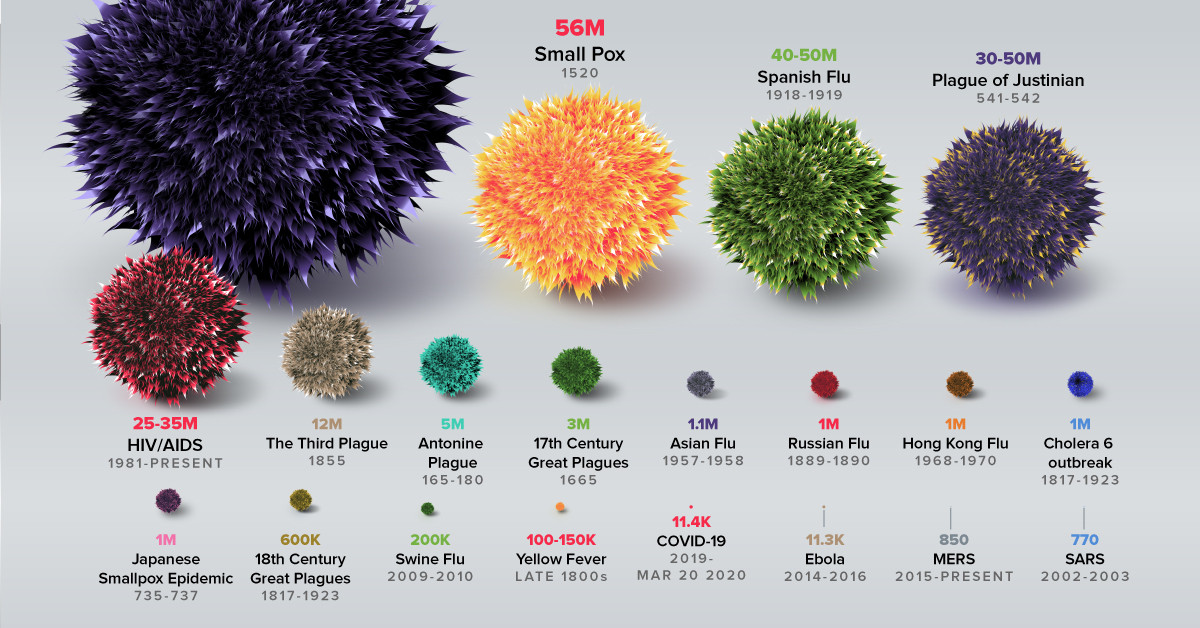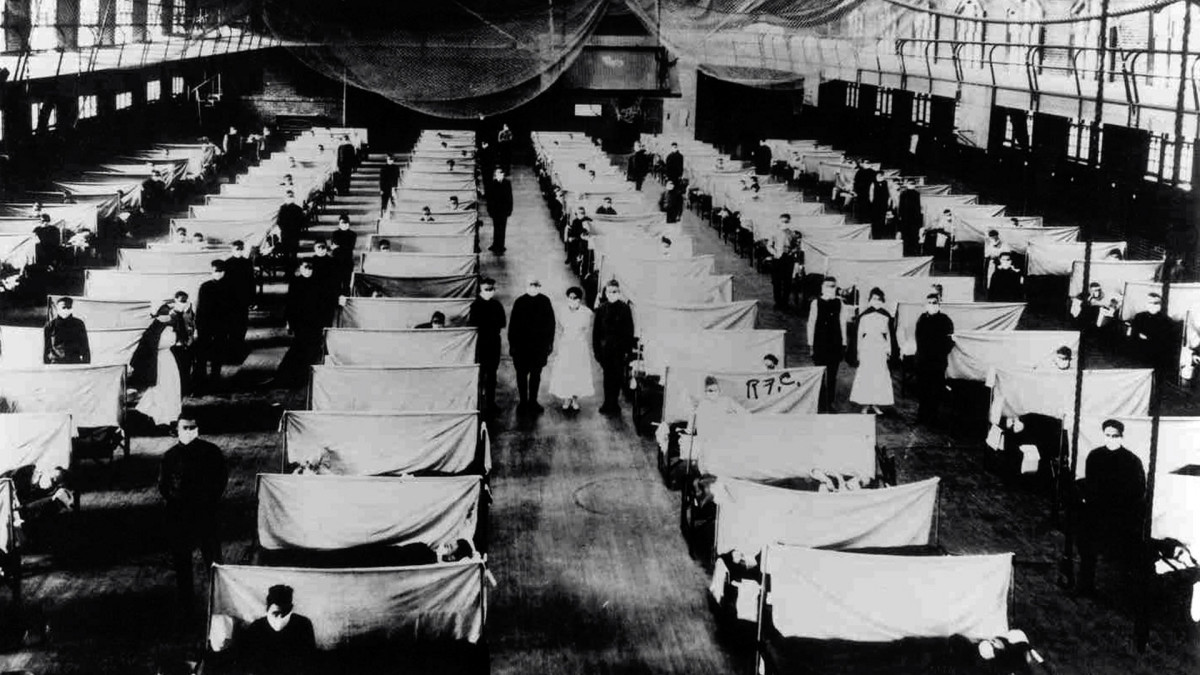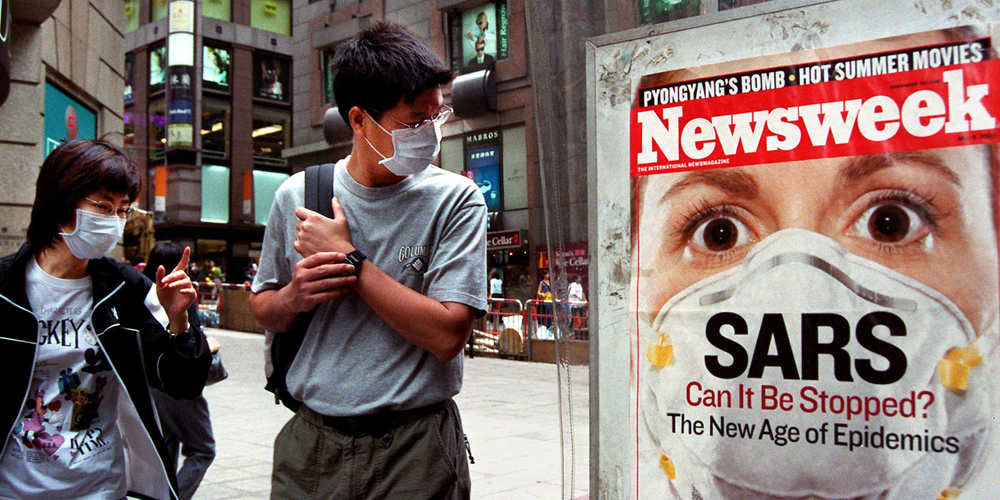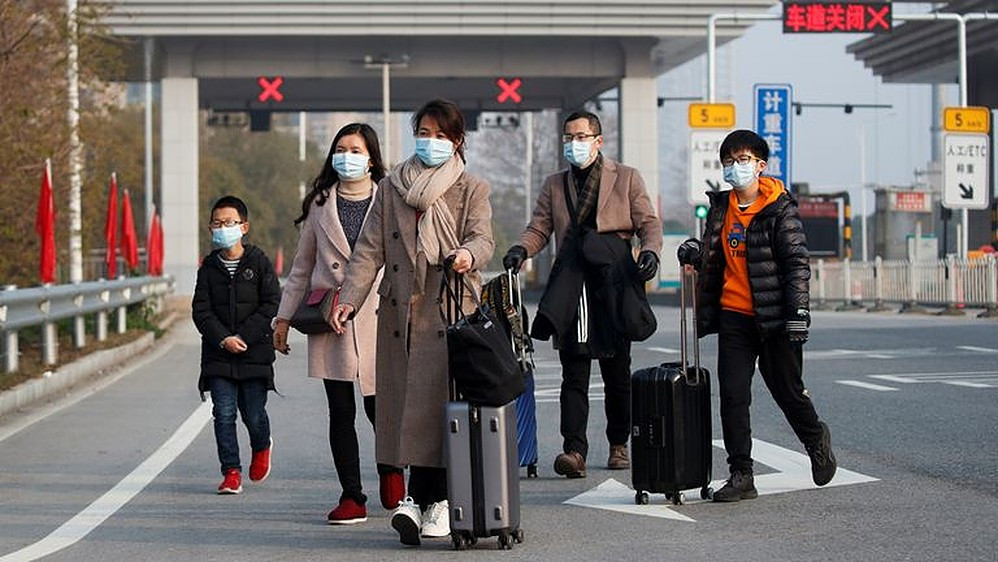

COVID 19 vs Outbreaks in the Past
Monday 30th of March 2020
COVID 19 vs Outbreaks in the Past
This isn’t the first time we face a deadly disease. There have been many such pandemics, each were very different from each other. Some were more deadly than others and had a higher death rate while others were less severe. But from all of it, we know how important it is to be prepared for such outbreaks as it is the biggest cause of human death.
1918 Influenza

The 1918 Spanish flu epidemic was the deadliest flu season we know of, infecting about one-third of the world’s population. Back then scientists didn’t even know viruses caused disease! And there wasn’t a vaccine or antivirals to help prevent or treat influenza, nor antibiotics to treat secondary bacterial infections. People lived in poor congested conditions that made it worse. There were 500 million global cases and over 50 million deaths.
Seasonal flu

It strikes every year but but no two seasons are exactly the same making it hard to predict what will hit. Unlike COVID-19, there are effective vaccines and antiviral medications that can help prevent and reduce the severity of the flu. There are about 1 billion infections and death between 291,000 and 646,000.
SARS (2002-2004)

This was another type of coronavirus that, shockingly, also came out of China and spread quickly through respiratory droplets. Though the SARS death rate was higher than COVID-19, COVID-19 has already claimed more lives. Unlike the covid19, the SARS virus didn’t have the “fitness to persist in the human population,” which eventually led to its demise, according to Schleiss. There were 8,098 cases across 29 countries and 15% mortality rate.
2009 (H1N1) flu pandemic

Similar to COVID-19, there was no immunity at the start of the outbreak of this new flu. We did have antivirals to facilitate recovery, and by the end of 2009, we had a vaccine which — combined with higher levels of immunity — would provide protection in future flu seasons. But global cases were about 24 percent of global population and deaths over 284,000.
Ebola (2014–2016)

This was extremely deadly, killing up to 50 percent of those who got sick and yet it wasn’t as contagious as COVID-19. It predominantly spread through bodily fluids like sweat and blood during the last stages of the disease and symptoms were so severe, health officials were able to quickly identify those who’d been in contact with people who had it and isolate them. Global cases were 28,652 across 10 countries and 11,325 deaths.
Novel coronavirus (2019-20)
With over 723,319 cases and 33,993 deaths reported from 199 countries and territories, COVID19 seems to have a greater impact on the world as it has more fatalities, more economic consequences and more social consequences. “We really, really need a vaccine,” Dr Mark Schleiss said.